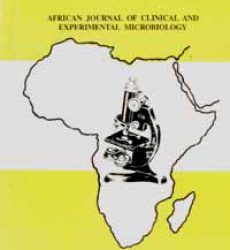1*Abouelnour, A., 2Zaki, M. E., 3Hassan R., and 4Elkannishy, S. M. H.
1,2Department of Clinical Pathology, Faculty of Medicine, Mansoura University, Mansoura 35516, Egypt
3Department of Medical Microbiology, Faculty of Medicine, Mansoura University, Mansoura 35516, Egypt
4Department of Toxicology, Mansoura Hospital, Mansoura University, Mansoura 35516, Egypt
4Department of Pharmacology and Toxicology, Faculty of Pharmacy, University of Tabuk, Tabuk, 71491, Saudi Arabia
Correspondence to: aalaa_abo@yahoo.com
Abstract:
Background: Clindamycin has been a good alternative drug to penicillins in the treatment of infections caused by Staphylococcus aureus but resistance to this agent has led to therapeutic failure. Inducible clindamycin resistance in staphylococci carrying erm genes may not be detectable by routine disk diffusion test. The objective of this study is to phenotypically detect clindamycin resistance in clinical S. aureus isolates and determine the prevalence of ermA, ermB and ermC carriage among these isolates.
Methodology: A total of 230 non-duplicate S. aureus were isolated from children admitted to Mansoura University Children Hospital during the period January 2016 and June 2017 by conventional microbiology method. Invitro antibiotic susceptibility to selected antibiotics including erythromycin was performed by the disk diffusion technique. The „D-zone‟ test was used to phenotypically detect inducible clindamycin resistance. The presence of ermA, ermB and ermC genes was confirmed by multiplex polymerase chain reaction (m-PCR) assay. Results: One hundred and seven (46.6%) isolates were phenotypically resistant to erythromycin while 109 (47.3%) were methicillin (cefoxitin) resistant S. aureus (MRSA). The macrolide-lincosamin-streptograminB (MLSB) phenotypes among the erythromycin resistant isolates were 47 (44%) inducible MLSB and 46 (43%) constitutive MLSB, while 14 (13.0%) were MS phenotype. Although, the MLSB phenotype was more predominant in MRSA (n=60, 56.1%) than MSSA (n=33, 30.7%) while the MS phenotype was more predominant in MSSA (n=9, 8.4%) than MRSA (n=5, 4.6%) isolates, the difference was not statistically significant (p=0.0777). The ermA (29.0%, n=31) and ermC (18.7%, n=20) were the most prevalent genes carried by the isolates while ermB was carried by a few (4.7%, n=5). Forty six (43%) isolates did not carry any detectable erm gene.
Conclusion: In this study, both inducible and constitutive clindamycin resistance phenotypes were common among S. aureus isolates. Although the genetic basis for this may be attributed to carriage of ermA, ermB and ermC genes, a number of the resistant isolates did not carry any of these genes.
Keywords: phenotypic, genotypic, macrolide-lincosamide-streptogramin B, S. aureus, children
Received July 20, 2019; Revised September 22, 2019; Accepted September 28, 2019
Copyright 2020 AJCEM Open Access. This article is licensed and distributed under the terms of the Creative Commons Attrition 4.0 International License (http://creativecommmons.org/licenses/by/4.0), which permits unrestricted use, distribution and reproduction in any medium, provided credit is given to the original author(s) and the source.
Identification phénotypique et génotypique de Staphylococcus aureus résistant à la clindamycine à l’Hôpital Universitaire Mansoura, Egypte
1*Abouelnour, A., 2Zaki, M. E., 3Hassan R., et 4Elkannishy, S. M. H.
1,2Département de pathologie clinique, Faculté de médecine, université Mansoura, Mansoura 35516, Égypte
3Département de microbiologie médicale, Faculté de médecine, université Mansoura, Mansoura 35516, Égypte 4ème département de toxicologie, hôpital Mansoura, université Mansoura, Mansoura 35516, Égypte
4Département 3D de pharmacologie et de toxicologie, faculté de pharmacie, université de Tabuk, Tabuk, 71491, Arabie saoudite
Correspondance à: aalaa_abo@yahoo.com
Abstrait:
Contexte: La clindamycine était un bon médicament alternatif aux pénicillines dans le traitement des infections causées par Staphylococcus aureus, mais la résistance à cet agent a entraîné un échec thérapeutique. La résistance inductible à la clindamycine chez les staphylocoques porteurs du gène erm peut ne pas être détectable par le test de diffusion systématique sur disque. L’objectif de cette étude est de détecter phénotypiquement la résistance à la clindamycine dans les isolats cliniques de S. aureus et de déterminer la prévalence du portage d’ermA, d’ermB et d’ermC parmi ces isolats. sélection d‟antibiotiques, notamment à l‟érythromycine, a été réalisée par la technique de diffusion sur disque. Le test de la «zone D» a été utilisé pour détecter phénotypiquement la résistance inductible à la clindamycine. La présence des gènes ermA, ermB et ermC a été confirmée par un test de réaction en chaîne de la polymérase multiplexe (m-PCR).
Résultats: Cent sept isolats (46,6%) étaient phénotypiquement résistants à l’érythromycine, tandis que 109 (47,3%) étaient résistants à la méthicilline (céfoxitine) S. aureus (MRSA). Les phénotypes macrolide-lincosamin-streptogramine B (MLSB) parmi les isolats résistants à l’érythromycine étaient 47 (44%) MLSB inductibles et 46 (43%) MLSB constitutifs, alors que 14 (13,0%) étaient des phénotypes MS. Bien que le phénotype MLSB soit plus prédominant dans le SARM (n=60, 56,1%) que le MSSA (n=33, 30,7%), le phénotype MS était plus prédominant dans le MSSA (n=9, 8,4%) que le SARM (n=5, 4,6%), la différence n’était pas statistiquement significative (p=0,0777). ErmA (29,0%, n=31) et ermC (18,7%, n=20) étaient les gènes les plus prévalents portés par les isolats, tandis que ermB était porté par quelques-uns (4,7%, n=5). Quarante-six (43%) isolats ne portaient aucun erm gène détectable.
Conclusion: Dans cette étude, les phénotypes de résistance à la clindamycine tant inductibles que constitutifs étaient courants parmi les isolats de S. aureus. Bien que la base génétique de ceci puisse être attribuée au portage des gènes ermA, ermB et ermC, un certain nombre des isolats résistants ne portaient aucun de ces gènes.
Clindamycin resistant S. aureus in Egypt Afr. J. Clin. Exper. Microbiol. 2020; 21 (1): 30 – 35
Mots-clés: phénotypique, génotypique, macrolide-lincosamide-streptogramine B, S. aureus, enfants
Download full journal in PDF below
Phenotypic and genotypic identification of Staphylococcus aureus resistant to clindamycin in Mansoura University Children Hospital, Egypt

